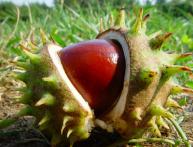Useful properties of gooseberries

Many of us have loved gooseberries since childhood. Especially those who were lucky enough to pick this berry straight from the bush in the countryside or in the village. A lot of dishes are prepared from gooseberries: jam, marmalade, wine, mousses, compotes, jelly and marmalade, puddings, marshmallows, ice cream, soups and casseroles are even prepared on its basis, and they are also pickled and salted.
Gooseberries can be the size of a plum or as small as peas. The color of the berries ranges from white to pink, from light green to almost purple.
Useful properties of gooseberries associated with the content of a large number of vitamins, macro- and microelements. Gooseberries contain phosphorus, potassium, iron, sodium, magnesium, tannins and carotene, pectin and organic acids, vitamins A, B, PP. The content of vitamin C in gooseberries can only be rivaled by black currants, which contain slightly more of it.
The skin of ripe gooseberries contains the greatest amount of useful substances.
The beneficial properties of gooseberries are manifested in the fact that it has laxative, choleretic, and diuretic properties. Mixed with bee honey, it is recommended to use it for anemia, obesity, and hypertensive heart disease.
Gooseberries cleanse the body of toxins, are useful in the treatment of skin diseases, gum and dental diseases, strengthen blood vessels, remove radionuclides and heavy metal salts.
Also, gooseberries are a good general strengthening agent, reduce cholesterol levels and stimulate cellular metabolism.
For women with menstrual irregularities and uterine bleeding, it is useful to drink a decoction or eat gooseberries.








